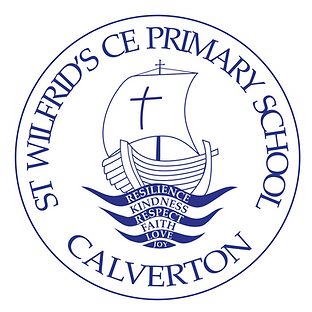Art
Intent
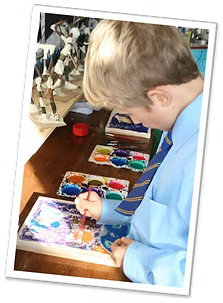
“The urge to draw must be quite deep within us, because children love to do it” – David Hockney
Our intent is that the children of St. Wilfrid’s Primary School continue to develop this love to help lessen the inhibitions that often inflict us later in life.
“Every child is an artist. The problem is how to remain an artist once we grow up” – Pablo Picasso
At St. Wilfrid’s we therefore aspire to allow all children to experience an art curriculum that develops not only skills and knowledge but a love and appreciation for the rich depth of cultural heritage that art promotes in order to fulfil, ‘the essential knowledge that pupils need to be educated citizens, introducing them to the best that has been thought and said and helping to engender an appreciation of human creativity and achievement.’ (The National Curriculum in England, Aims: 3.1)
A curriculum that values each child as an artist where they are not judged but become self-reflective learners free of the constraints of failure.
“There is no must in art because art is free.” -Wassily Kandinsky
Implementation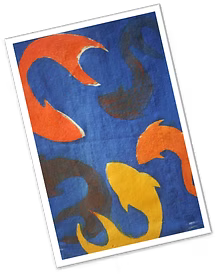
Art must be life — it must belong to everybody.” – Marina Abramović
In EYFS, the children are exposed to a wide range of art and design techniques through the continuous provision learning environment as well as cross-curricular activities. They are taught how to cut, hold a paintbrush, blend colours and join materials as well as manipulate malleable materials such as salt dough.
In Years 1 - 6 specific skills to ensure there is full coverage of a range of areas of art, have been identified. These include: drawing (pencil, pen and ink), paint, sculpture, printing, collage (paper and fabric) as well as architecture and design.
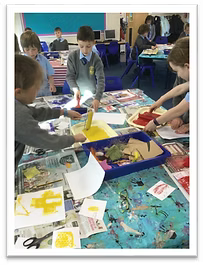
At St. Wilfrid’s we aim to promote the importance of art in the curriculum by ensuring the resources available are of a high quality, accessible to all and are used to support children’s confidence in the use of different media throughout the early years and key stages.
The skills and knowledge that children will develop throughout each art topic are mapped across each year group and throughout the school to ensure progression as well as a diversity in artists, designers and architects studied and mediums used. The emphasis on knowledge ensures that children understand the context of the artwork, as well as the artists that they are learning about and being inspired by. Where appropriate, art activities may be linked to other areas of the curriculum – however, the focus of an art lesson should always be the acquisition of skills and knowledge in art. It is much more desirable that the skills learnt in art are transferred to enhance learning in other subjects.
“I do not want ART for a few any more than education for a few, or freedom for a few.” – William Morris
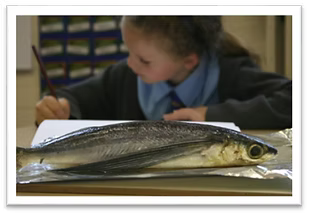
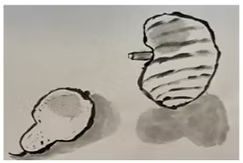
Impact
“The Achilles heel of an artist lies in the hope that his art is good.” – Kapil Gupta
The impact of our art curriculum is measured against the aims of the 2014 National Curriculum, that all pupils should:
- Produce creative work, exploring their ideas and recording their experiences
- Become proficient in drawing, painting, sculpture and other art, craft and design techniques
- Evaluate and analyse artistic works using the language of art, craft and design
- Know about great artists, craft makers and designers, and understand the historical development of their art forms
A child’s art journey within a unit of work can therefore be evaluated against the following, linking closely to those aims:
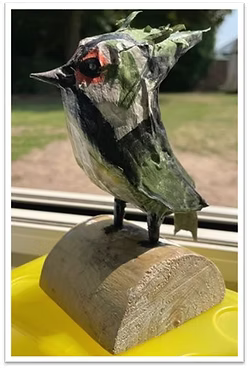 Generating Ideas: complexity; research; observation; originality; perception; aspiration; creativity.
Generating Ideas: complexity; research; observation; originality; perception; aspiration; creativity.- Making: technique; skill; control; complexity; mastery; quality; judgement; creativity.
- Evaluating: judgement; autonomy; independence; perception; subtlety.
- Knowledge: breadth; contextual understanding; explanation; judgement.
Children will be taught to evaluate their own reflective evaluations as well as appreciation as to what they enjoy about the work of a diverse range of artworks and designs.
At the end of their learning journey at St. Wilfrid’s children should all see themselves as artists, free to explore themes and stimuli independently and with enjoyment.
The impact of the curriculum will ensure each pupil has a wealth of knowledge of artists, designers and architects to draw upon as well as skills developed sufficiently to access a range of media confidently in order to express creatively their own ideas.
